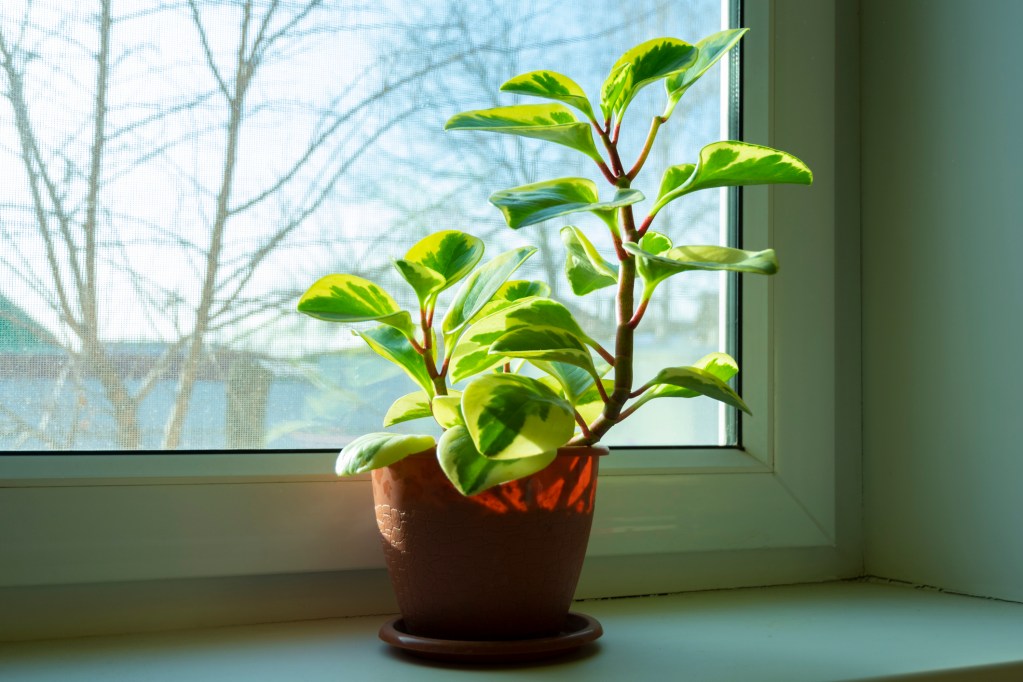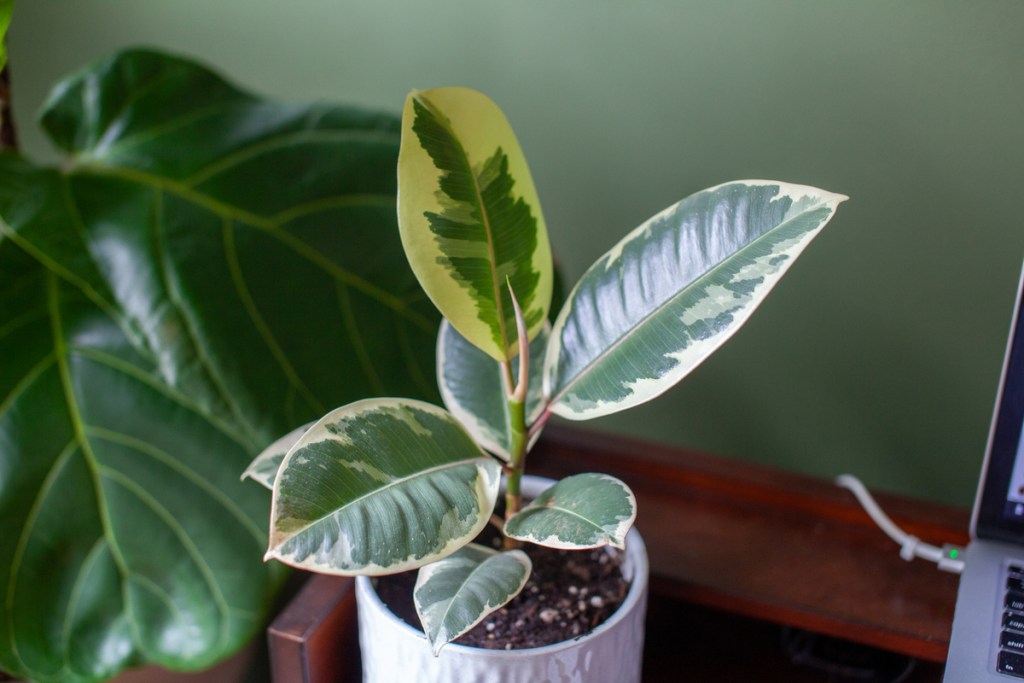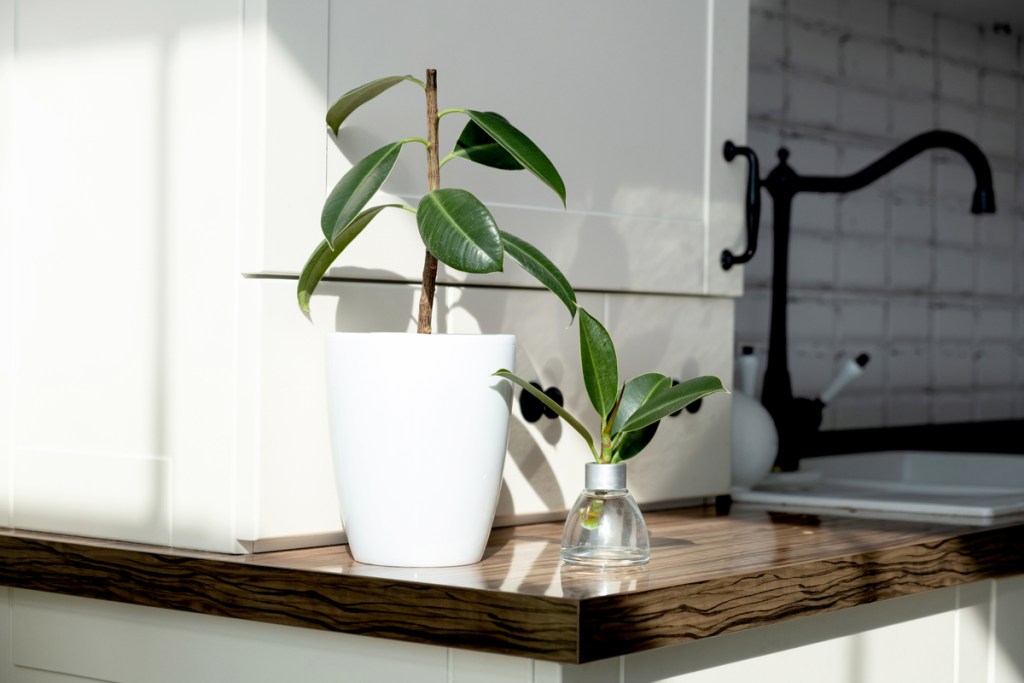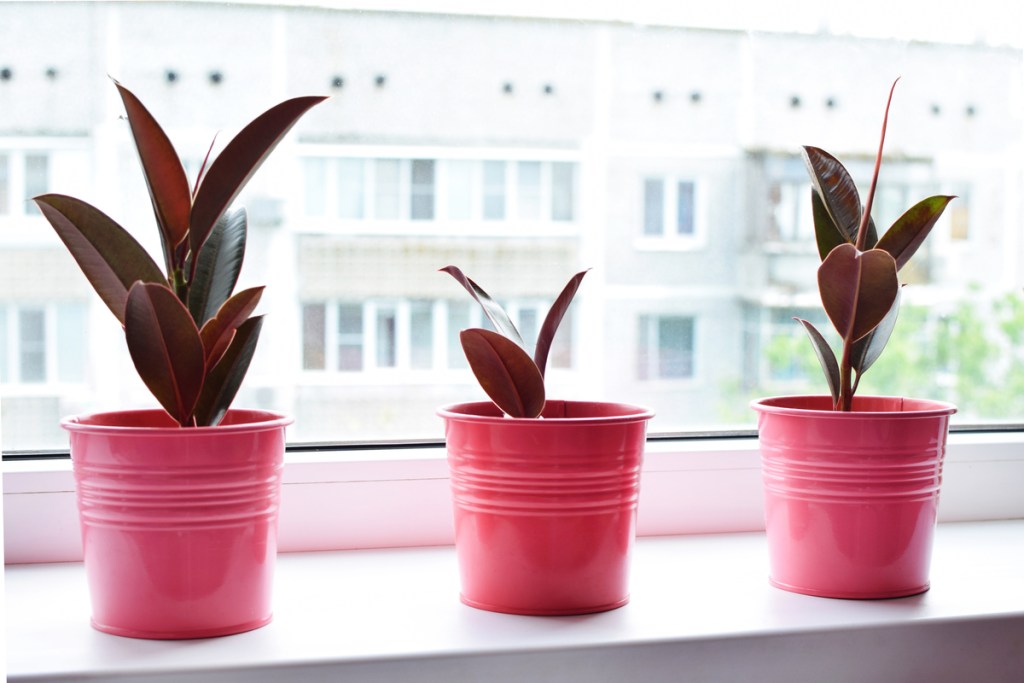How To Propagate A Rubber Plant In Water
Wondering how to propagate a rubber tree plant? You lot're in luck! Rubber trees, likewise chosen rubber figs, are a lovely, pop plant native to several parts of southern asia. These easy-to-intendance-for ornamental plants are Ficus elastica, not to be confused with Hevea brasiliensis, another plant that is commonly referred to as a condom tree. If you already have one, or if y'all know someone who is willing to share theirs, then y'all may want to know how to propagate it to produce more condom copse. Don't worry, the process isn't complicated, and we'll walk you through each footstep in this simple guide.

When should y'all propagate prophylactic trees?
Since nigh rubber trees are indoor plants, you tin begin propagating them in any flavour. In general, due to the warm temperatures safe trees prefer, many regions in the Us will see improve results in spring or summer. However, if you live in a region with mild or warm winters, you should exist able to propagate year-circular with little to no issue. If your region has cold winters, you tin all the same propagate in fall or winter, only remember to go on your rubber tree away from drafts.
You should likewise await until your rubber tree is mature to brainstorm taking cuttings. This is all-time for the overall wellness of both the parent institute and the cutting. Since they're typically indoor plants, only can grow quite tall, some gardeners find it easier to pair propagation with pruning.

Taking a prophylactic plant cutting
Before you take your cut, you should be enlightened that the sap of the rubber tree tin be a pare irritant. If you take sensitive pare, or merely desire to avoid whatsoever potential itchiness, you may want to put on gloves. Regular gardening gloves or gloves of similar thickness should work well. Avert using gloves made of material that volition blot sap, since it can be difficult to get make clean.
You can use a knife, garden shears, or pruning shears to accept the cut, depending on the size of your rubber tree and the thickness of its branches. Whichever tool you utilize, brand sure information technology's clean. Additionally, choose a abrupt blade. Dull blades are more likely to skid, leading to potential injury to both y'all and the plant.
Your cut should be at least six inches long, only can be longer, and should accept at least 2 leaves on the end contrary where the cut will occur, too as a leaf node nearer to the cut. Avoid taking a cutting where the only leaves volition be nearly the cutting end. Using your clean tool of choice, brand one cut diagonally beyond to dissever the cutting from the rest of the tree. This cut end will form the base of your new safety constitute.

Rooting the safe plant cutting
Once you accept your cutting, there are a few things y'all can do to encourage it to root. Outset, strip off whatsoever leaves that are close to the cut. The cut end of the cutting will exist underground, then any leaves nigh it volition likewise be cloak-and-dagger, and would brainstorm to rot, leading to potential infection. You can apply some rooting hormone to your cut, only this isn't strictly necessary. Rooting hormone can speed upwardly the rooting process, and is adequately piece of cake to find at most garden supply stores.
Rubber tree plants can be rooted in soil or water. If you desire to root your cutting in water, identify it in roughly two inches of water. Keep information technology out of direct light, but make sure it's warm. Change the water once a week. Cuttings can take 12 weeks or longer to root using this method. Since cuttings rooted in soil take roughly half the corporeality of time to grow roots, it'south often the preferred method. Institute your cut, cut side down, near two or 3 inches deep in the soil. Cuttings longer than six inches can be planted deeper.

Caring for the prophylactic plant cut
If yous already have a rubber tree, you lot can apply the same potting mix for your cut. Otherwise, regular potting soil will work, as rubber trees are not especially picky about soil type. Continue the soil consistently moist, and identify your cutting well-nigh a lite source, but not directly in the path of the calorie-free. Although developed rubber trees can tolerate some direct light, cuttings are slightly more sensitive. Brand sure your cut is somewhere warm, and away from any drafts or air conditioning vents. The cutting should have a total root system afterwards a few months, and you should encounter signs of healthy growth by then also.
Propagating prophylactic plants is a simple, piece of cake procedure. If you have a large, mature rubber tree, then you can propagate information technology multiple times. Cuttings that have established root systems brand great gifts, and, if you pair your propagation with pruning, y'all'll also get the do good of a smaller, more manageable rubber tree. Now, no matter what you plan to do with your cuttings, you know everything there is to know virtually propagating your safety tree institute.
Editors' Recommendations
- How to revive a struggling orchid and return it to its majestic former glory
- Everything you demand to know almost growing good for you ferns indoors
- The v best places to purchase succulents online to start your found collection
- How to grow ivy indoors without it taking over your house
- How frequently to h2o begonias for big, gorgeous blooms all season long
How To Propagate A Rubber Plant In Water,
Source: https://www.happysprout.com/indoor-plants/how-to-propagate-rubber-tree/
Posted by: starnerserroustere.blogspot.com


0 Response to "How To Propagate A Rubber Plant In Water"
Post a Comment